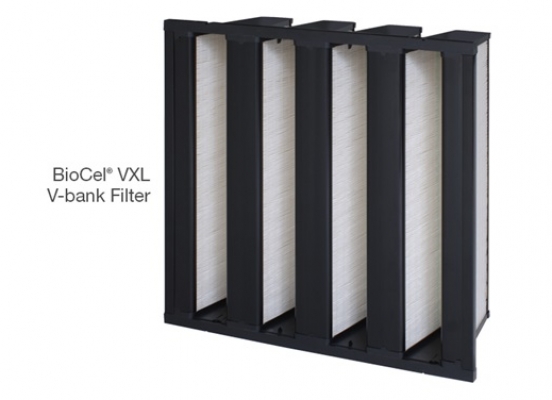Air Filtration Control of Bio-Aerosol Particles
Airborne pathogens present a significant challenge to human health. Smaller particles present the greatest hazards, due to their ability to bypass the body’s defenses. Of all airborne particles, virus particles are some of the smallest, allowing them to go deep within the lungs and enter the bloodstream.
Of note, most viruses do not remain suspended in the airstream as independent particles. Instead, virus particles tend to “piggyback” on or within a slightly larger particle, such as an aerosolized droplet, skin flake, or dust particle. Therefore, while it’s beneficial to have a filter that’s highly efficient on the particle size of the virus you wish to defend against, it is most critical to choose a filter that is as efficient as possible on particles sized 0.5 microns and larger, which is the size of the aerosolized droplets that most commonly carry viruses.
.jpg?h=424&w=631&la=en&hash=C45D0BE7D7B10DEB540A0726C068B97E3C633E22)
Upgrade Your Air Filters
Both MERV 14 and MERV 16 air filters are effective against small particles, but how effective is a crucial distinction. Consider the difference in penetration rates between filters of these respective efficiencies, particularly in the smaller size ranges that are most likely to contain airborne pathogens or virus-carrying particles.


Increased Protection Without Increased Energy Costs
AAF’s modern MERV 16 filters will not only give you greater peace of mind by filtering out more small particles, they help minimize energy consumption, too. Our BioCel® VXL box filter, for example, has initial resistance comparable to a standard box-style MERV 14 filter – allowing you to upgrade your air filtration defenses without adding significant energy costs or over-running your existing system.which is very stable, with no racking or vibration of the pleats under normal airflow. Pleat stability minimizes the chances of captured particulate shaking loose and re-entering the airstream.

Media Matters
For a truly effective solution, look for a MERV 16 filter that uses fiberglass media. Fiberglass media filters the air mechanically, without the electrostatic charge effect found in many synthetic media filters. Over time, filters made with synthetic media can lose efficiency when that charge dissipates, allowing significantly more small particles to penetrate through the filter.
Preventing Filtration Bypass
Unfortunately, a filtering solution is only as strong as its weakest point. If there is not an air-tight seal between the filter and holding frame, or between holding frames, then small particles will move through your HVAC system with ease, regardless of which filter you choose. AAF Flanders offers complimentary air filtration audits that can uncover hidden sources of dirty air bypass, as well as opportunities to realize enhanced energy efficiency and reduce strain on your HVAC equipment.
To know more, please check AAF.

